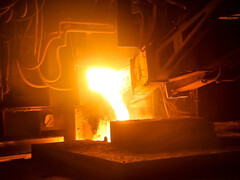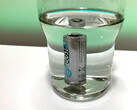Since the Iron Age (around 1200 BC), iron ore has been heated and melted using a great deal of energy in order to obtain pure iron. A few more ingredients and you get steel - somewhat simplified.
Today, the annual production of this widely used metal (the fourth most common element in the earth's mantle) is 2.5 billion tons. And the CO2 emissions produced by mining, blast furnaces and refining are correspondingly huge.
One approach that has already been tried is replacing coal and coke with green hydrogen and green methane, which is already being put into practice in some cases.
Researchers at the University of Oregon are approaching the problem in a completely different way. When extracting sodium from salt water, a setup is used that resembles a typical battery. Sodium is found in all oceans worldwide in the form of dissolved sodium chloride or common salt.
If the cathode material is replaced with iron ore, the chemical process remains virtually unchanged. However, the cathode decomposes into sodium hydroxide and pure iron. The oxygen is dissolved out of the iron ore. What remains is elemental iron.
Less energy is required than for smelting iron. Only electricity is required, which ideally comes from renewable sources. The resulting sodium hydroxide can also be sold.
And that's not all: it even binds CO2, removes the oxygen and leaves behind the carbon in mineral form, for example as graphite. The process could therefore lead to a carbon sink.
Still at the very beginning
These are currently laboratory tests. Establishing them on an industrial scale will take time. In addition, not only sodium is produced, but of course also chlorine gas, which is toxic and in turn pollutes the environment. However, chlorine is also used in the chemical industry.
Furthermore, the cathode would have to be made of pure iron ore, which would first have to be cleaned accordingly after mining. This makes the process more expensive and less efficient.
Nevertheless, several tens of millions of tons of iron could be produced every year based on the demand for chlorine alone - without CO2 emissions.
And just because a technology has been known and trusted for almost 3,000 years doesn't mean that you can't try something new.















